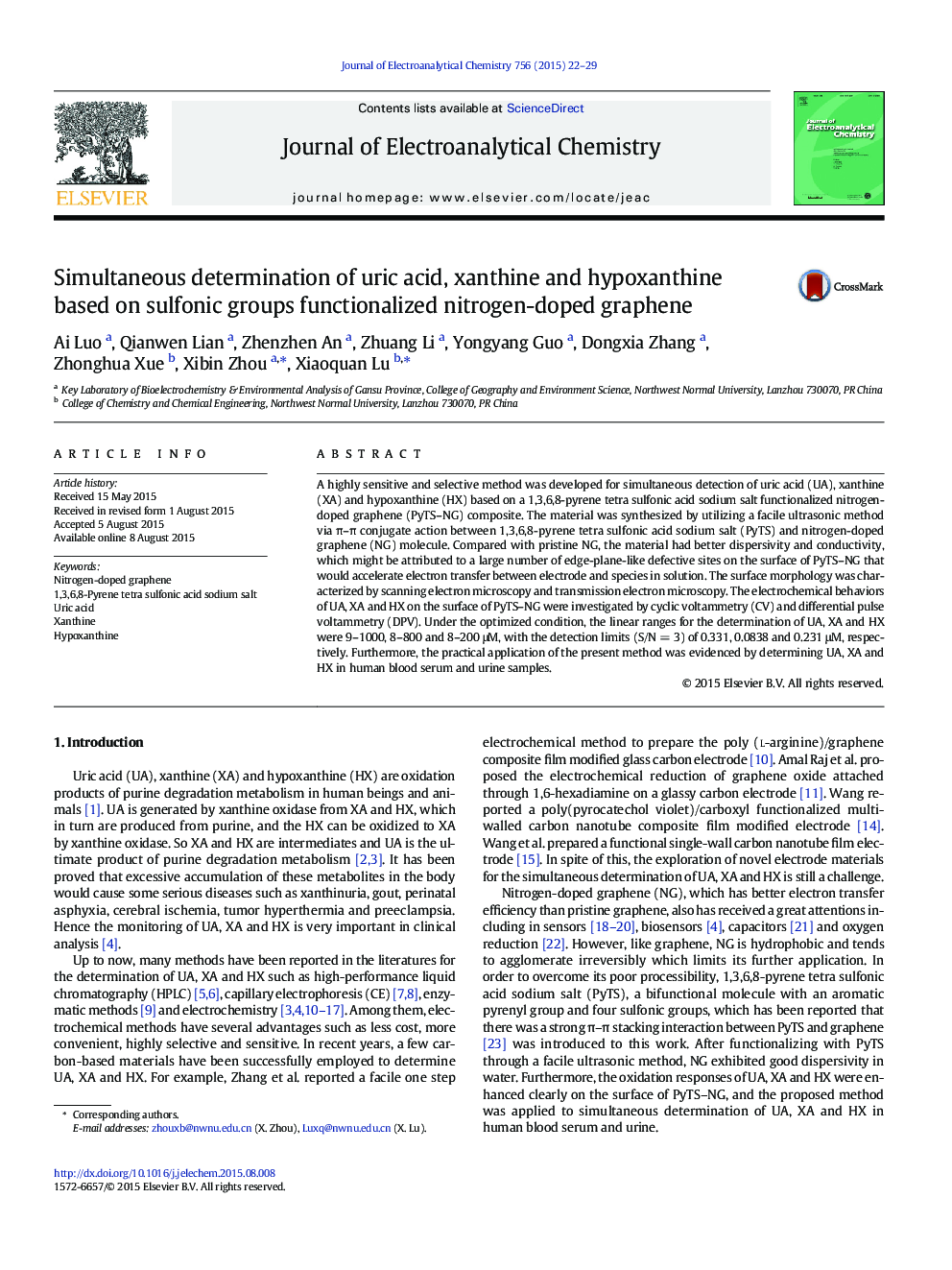| Article ID | Journal | Published Year | Pages | File Type |
|---|---|---|---|---|
| 218283 | Journal of Electroanalytical Chemistry | 2015 | 8 Pages |
•A novel PyTS–NG nanocomposite was successfully prepared.•The material has better dispersivity and conductivity.•A sensitive electrochemical sensor based on PyTS–NG was fabricated for simultaneous determination of UA, XA and HX.
A highly sensitive and selective method was developed for simultaneous detection of uric acid (UA), xanthine (XA) and hypoxanthine (HX) based on a 1,3,6,8-pyrene tetra sulfonic acid sodium salt functionalized nitrogen-doped graphene (PyTS–NG) composite. The material was synthesized by utilizing a facile ultrasonic method via π–π conjugate action between 1,3,6,8-pyrene tetra sulfonic acid sodium salt (PyTS) and nitrogen-doped graphene (NG) molecule. Compared with pristine NG, the material had better dispersivity and conductivity, which might be attributed to a large number of edge-plane-like defective sites on the surface of PyTS–NG that would accelerate electron transfer between electrode and species in solution. The surface morphology was characterized by scanning electron microscopy and transmission electron microscopy. The electrochemical behaviors of UA, XA and HX on the surface of PyTS–NG were investigated by cyclic voltammetry (CV) and differential pulse voltammetry (DPV). Under the optimized condition, the linear ranges for the determination of UA, XA and HX were 9–1000, 8–800 and 8–200 μM, with the detection limits (S/N = 3) of 0.331, 0.0838 and 0.231 μM, respectively. Furthermore, the practical application of the present method was evidenced by determining UA, XA and HX in human blood serum and urine samples.
Graphical abstractFigure optionsDownload full-size imageDownload as PowerPoint slide
